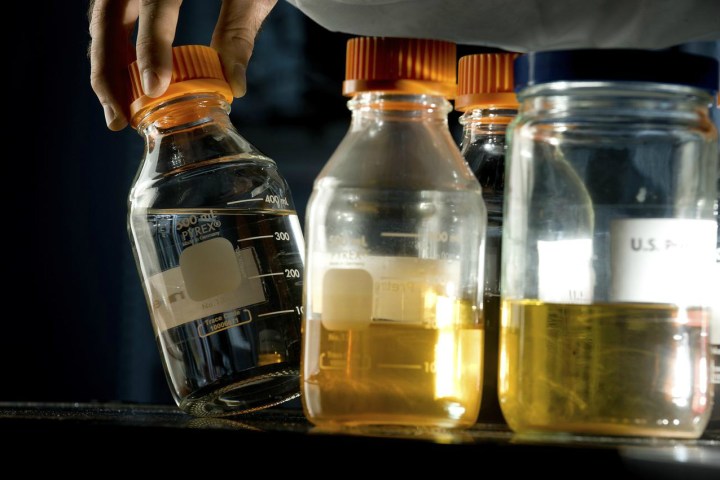
NASA has been repurposing astronaut urine on the International Space Station for years. In fact, nearly 93 percent of all water on the ISS is reclaimed from sweat, breath, shower runoff, and urine (from both astronauts and animals on board). A fun fact: Cosmonauts don’t drink water reclaimed from urine. However, the American astronauts recycle cosmonaut urine for a portion of their hydration needs.
The project, presented at the American Chemical Society annual conference, is focused on fine-tuning clever ways to repurpose human waste in orbit. The team hopes to one day use strains of Yarrowia lipolytica- — a yeast often found in certain cheeses — fed human urine to create a series of useful byproducts including plastics for 3D printing and even food supplements. The urea in urine provides nitrogen for the yeast cultures. Earlier research has already illustrated how genetically modified yeast can be used to produce essential nutrients like omega-3 fatty acids, plastics, and also polyesters. All of which will be crucial supply elements on longer missions (say to Mars, for example) where resupply missions could take months.
“Astronauts will need to be able to produce nutrients and materials they need during Earth-independent long-term space travel,” noted lead researcher Mark Blenner, a synthetic biologist at Clemson University in South Carolina. “They simply don’t have the space to transport all possible needs — and certain nutrients, drugs, and materials can degrade over the course of three-plus year mission.”
NASA has made great leaps in the past few years when it comes to testing support systems crucial to any extended, self-sufficient mission. These projects include everything from growing food in an onboard space garden to 3D-printing tools and even satellites in orbit. This latest effort is still in its preliminary phase, however, Blenner is optimistic the project will eventually have practical applications in due time.
Blenner’s team is also considering the possibility of another process that uses human fecal matter to support yeast growth. The best method for extracting plastics from said yeasts as well as how well the organisms will grow in microgravity and a host of other variables are currently still unknown. That said, not everyone in the scientific community is equally amped about the potential of this new pee-fed Franken-yeast.
“I can’t help feeling in most cases it is a lot lighter just to carry the spares than a giant piece of machinery that produces a rather crappy piece of plastic that might not be the best for the tool in the first place,” explained Mark Hempsell, president of the British Interplanetary Society.
Whether this project ever comes to fruition or is simply money down the drain is anyone’s guess.
Editors' Recommendations
- How to watch NASA launch SpaceX Crew-3 astronauts tonight
- NASA announces astronauts to head to ISS on fourth SpaceX Crew Dragon mission
- How to keep astronauts sane: The psychology of long-duration space missions
- NASA thinks 3D-printing spacecraft parts in orbit will help Moon to Mars mission


